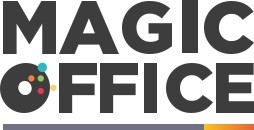
Understanding the Need for a Paperless System
Recognizing the Shift Towards Efficiency in Accounts Payable
The traditional accounts payable process has long been reliant on paper invoices and manual data entry, yet businesses are starting to recognize the inefficiency inherent in such methods. Over-reliance on paper documents and extensive data processing time not only slows down the payable system but also increases the chances of errors such as duplicate payments or misplaced invoices. This inefficiency can affect the broader payment processes of a company and hinder overall business success.
In today’s increasingly digital world, companies are becoming more aware of the benefits of embracing a paperless accounts payable system. The shift to automation allows for seamless invoice processing, reduces reliance on paper, and enables real-time invoice approval and vendor payments. By eliminating manual data entry, businesses can streamline their payable processes, prevent errors associated with paper-based systems, and enhance payable automation.
In the following sections, we will explore the key benefits of going paperless, delve into the challenges encountered by UK companies during this transition, and provide a step-by-step guide to implement a paperless invoicing system effectively.
Key Benefits of Going Paperless
Advantages of Reducing Paper Dependence
With the transition to a paperless accounts payable system, UK companies stand to gain a multitude of key benefits. By addressing the concerns and reservations about this digital shift, businesses can better understand why many organizations are moving away from traditional paper-based processes. Firstly, accounts payable automation significantly enhances processing speed. Manual data entry, often required with paper invoices, becomes obsolete. This reduction in paperwork leads to faster invoice processing, minimizing the likelihood of duplicate payments and other errors. Payments can be managed in real time, allowing for more streamlined and efficient operations. Moreover, businesses can improve cost efficiency by going paperless. Direct costs associated with printing, storing, and managing paper documents are reduced. Leveraging specialized software minimizes the time spent on tasks like matching purchase orders with invoices, thus freeing up resources for more critical business functions. Another advantage lies in better accessibility and transparency of accounts payable processes. A paperless system provides real-time access to data across multiple departments, facilitating quick invoice approval. This transparency enhances the control over vendor payments, ensuring accuracy and compliance across the board. In addition to improving business efficiency, the environmental impact cannot be overlooked. Adopting a paperless invoicing approach contributes positively to sustainability efforts, reducing the company's carbon footprint and fostering an environmentally conscious corporate culture. Enhancing cost efficiency through strategic management also complements these paperless initiatives, further driving the economic and operational advantages for UK companies.Challenges Faced by UK Companies
Obstacles in Transition to a Digital Format
While the benefits of going paperless are significant, many UK companies face challenges during the transition to a paperless accounts payable system. Understanding these obstacles can help businesses prepare and overcome them effectively.
First, the initial cost of implementing a new accounts payable system can be a significant barrier. Investing in advanced software solutions for invoice automation, data processing, and approval requires a financial outlay that some businesses might find daunting.
Another challenge is the resistance to change, often observed among staff accustomed to traditional paper-based processes. Employees may feel uncomfortable shifting to a digital system for payment approvals and accounts processing. Training and ongoing support are essential to ease this transition.
Integrating the new payable automation system with existing business processes can also pose a challenge. Ensuring seamless communication between new and existing systems is crucial to prevent errors, data loss, or duplicate payments, which could hinder business efficiency.
Data security is a significant concern when dealing with electronic documents and real time processing. Protecting sensitive information, such as vendor payments and invoice data, requires robust cybersecurity measures to ensure that the system is not vulnerable to threats.
Finally, maintaining compliance with industry regulations and standards is vital. Inadequate compliance could lead to legal issues and financial penalties, impacting the business adversely.
Steps to Transition to a Paperless Accounts Payable System
Planning and Implementing: The Roadmap to a Paperless Transition
Moving to a paperless accounts payable system is a strategic process that requires careful planning and implementation. To commence this journey, it is crucial to assess your current accounts payable workflows. By identifying existing pain points in your accounts payable and paper-based processes, such as frequent duplicate payments or manual data entry errors, you can map out areas for improvement.
The following steps can guide your business toward successful paperless invoicing transformation:
- Evaluate Current Processes: Examine your current invoice processing and document management systems to pinpoint inefficiencies and gather relevant data. Knowing where the majority of time is spent and where bottlenecks occur will help tailor the solution.
- Set Clear Objectives: Define what you aim to achieve by transitioning to a paperless system, whether it's reducing invoice approval times, minimizing data entry errors, or cutting down operational costs.
- Engage Key Stakeholders: Bring together key members of your payable department, IT, and finance teams to get their input and buy-in for the transition. Their understanding of the daily processing of payable accounts and invoices will be invaluable.
- Select the Right Tools: Identify software solutions that cater to your specific needs, ensuring compatibility with existing systems for smooth integration. Consider payable automation tools that enhance real-time payment processing and data accuracy.
- Pilot and Scale: Begin with a pilot program for selected accounts or processes to test the effectiveness of the chosen solution. This allows for adjustments before full implementation.
- Train Your Team: Ensure comprehensive training for all involved personnel to facilitate seamless adoption of the new paperless system and resolve any initial difficulties.
By drawing from these steps, businesses can transition smoothly to a robust paperless accounts payable system, reaping benefits such as increased efficiency, faster invoice approval, and reduced payment times.
Choosing the Right Technology
Selecting Suitable Technologies for Your Business Needs
Choosing the right technology is crucial when transitioning to a paperless accounts payable system. The decision can significantly impact the efficiency and success of the adoption process.- Exploring Invoice Automation Software:
- Integration with Existing Systems:
- Security and Compliance:
- Scalability and Flexibility:
- User-Friendliness:
- Vendor Support and Training:
Real-Life Success Stories
Success in Real-World Scenarios: Transformative Outcomes
Real-life examples of businesses transitioning to a paperless accounts payable system provide valuable insights into the transformative potential of this shift. Companies once bogged down by manual data entry and the mountain of paper invoices have experienced a notable increase in efficiency and accuracy.
One key success story involves a UK-based manufacturing business that struggled with delayed vendor payments due to the intricacies of their old paper-based process. By adopting invoice automation software, they radically improved their invoice processing capability, ensuring real-time processing and swift payments. This change not only enhanced their vendor relationships but also strengthened their financial controls, effectively reducing the risk of duplicate payments.
An electronics distribution company, facing similar challenges, revolutionized their payable department by embracing paperless invoicing. This move allowed them to streamline their payable process, reducing the burden on their accounts payable team and enabling them to focus on strategic tasks rather than strategic routine data processing. The system’s efficiency in handling purchase orders and supporting invoice approval workflows led to a transformation in their business operations.
These examples underscore the value of thoughtfully integrating digital processes to meet modern demands. As businesses like these demonstrate, moving away from paper not only simplifies operations but also provides a competitive edge in today’s fast-paced business environment. With the right approach and technology, any company can transition towards a paperless accounts payable system and achieve similar successes.













